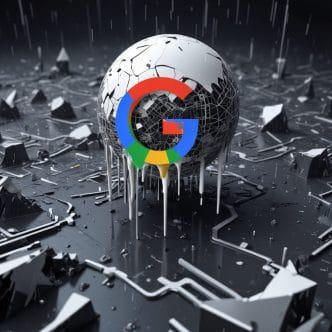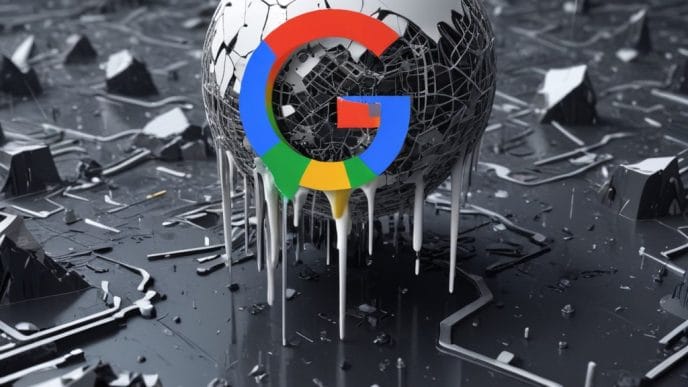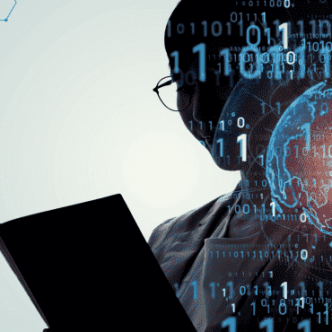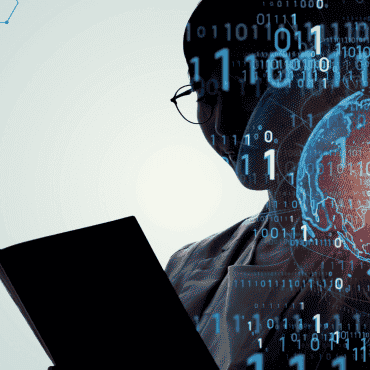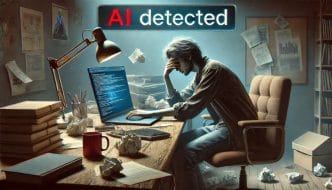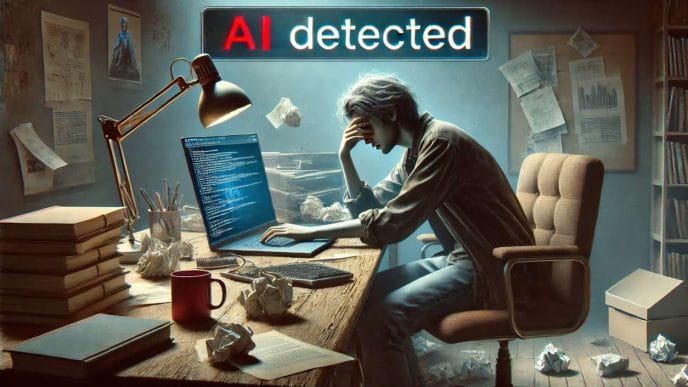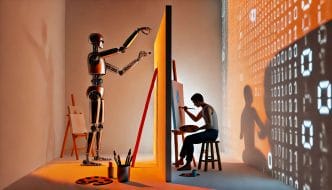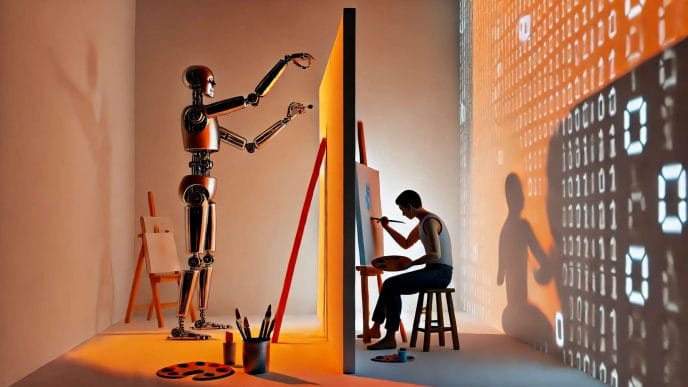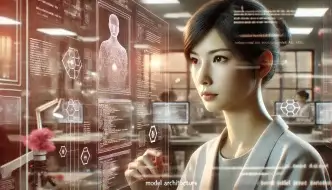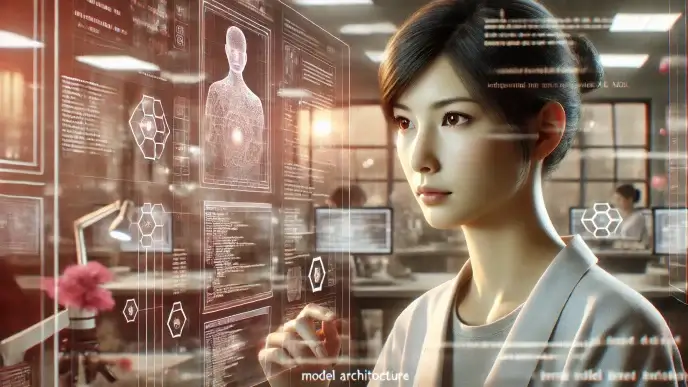The phone rings, an unfamiliar number flashing on the screen. With a casual swipe, you answer, expecting the usual telemarketer’s spiel or a wrong number. But instead, your own voice greets you, the inflection so familiar, the cadence so distinctly yours that it sends a shiver down your spine. A wave of disorientation washes over you. How is this possible? you wonder, your heart pounding in your chest.
Welcome to the uncanny reality of AI-generated voices, where technology is blurring the lines between the authentic and the artificial. Truecaller, a popular caller identification app, has recently unveiled a groundbreaking feature that allows users to create a digital clone of their own voice. This voice doppelganger can answer calls, exchange pleasantries, and even engage in rudimentary conversations, all while you’re busy living your life offline.
While the convenience factor is undeniable – who wouldn’t want an AI assistant to field those pesky spam calls? – this technological leap also raises questions about identity and authenticity. When our voices, once considered a unique fingerprint of our individuality, can be replicated so convincingly, the implication is far-reaching. It touches on everything from trust and authenticity to the very nature of communication.
From Robotic Whispers to Vocal Virtuosos
The journey of AI-generated voices is a testament to the relentless march of technology, a narrative of transformation from rudimentary whispers to sophisticated symphonies of sound. In the early days, text-to-speech (TTS) systems were clunky and mechanical, producing voices that sounded more like robotic monotones than human conversation. They were limited in their ability to capture the nuances of language, often stumbling over pronunciations and delivering lines with a stilted cadence that lacked emotion and naturalness.
However, the advent of deep learning, a subset of machine learning that uses neural networks to model complex patterns in data, revolutionized the field. These neural networks, inspired by the interconnected neurons in the human brain, were trained on vast datasets of voice recordings. They meticulously analyzed the intricacies of human speech, dissecting the subtle inflections, pauses, and rhythms that make each voice unique. This immersion in the vast ocean of vocal data allowed AI models to learn and replicate the subtleties of human speech with remarkable accuracy.
Today, AI-generated voices are ubiquitous in our daily lives. Virtual assistants like Siri, Alexa, and Google Assistant have become our constant companions, responding to our queries with a conversational flair that belies their artificial origins. They can crack jokes, offer words of encouragement, and even sing a lullaby if you ask nicely.
In the entertainment industry, they give voice to video game protagonists, narrate audiobooks with the dramatic flair of Shakespearean actors, and even resurrect the voices of iconic figures for documentaries and historical re-enactments. In the realm of accessibility, for individuals with speech impairments, these voices have become a lifeline, enabling them to communicate effectively and express themselves with newfound confidence. Text-to-speech devices and assistive technologies have given them a voice, breaking down barriers and fostering greater inclusion in society.
The evolution of AI-generated voices is a testament to the ingenuity of human innovation and the boundless potential of artificial intelligence. But as these voices become more sophisticated and pervasive, they also raise profound questions about identity, authenticity, and the very nature of human communication.
Your Voice, Your Identity. Or Is It?
Throughout history, our voices have been as unique as our fingerprints, serving as undeniable markers of our individuality. Each vocal inflection, every subtle shift in tone, carries the weight of our experiences, our emotions, our very essence. Our voices are the instruments through which we connect with the world, expressing our thoughts, feelings, and desires. They are the sonic embodiment of our identity.
But in the age of artificial intelligence, this fundamental truth is being challenged. AI-generated voices, with their uncanny ability to mimic and replicate human speech, are blurring the lines between the authentic and the artificial. Suddenly, the voice that once served as a reliable identifier of self is becoming malleable, subject to manipulation and imitation.
The battle between actress Scarlett Johansson and OpenAI, the company behind the AI language model ChatGPT, brought these questions to the forefront. OpenAI’s voice assistant, “Sky,” bears an uncanny resemblance to Johansson’s voice, particularly her performance as an AI in the movie “Her.” Johansson, who had not given permission for her voice to be used, sued OpenAI, alleging a violation of her right of publicity. While OpenAI claims a different voice actor behind the voice, the similarity calls to question the intent behind this uncanny similarity.

Source: https://depositphotos.com/photos/scarlett-johansson.html
When Seeing (or Hearing) Is No Longer Believing
The ability of AI to replicate voices with astonishing accuracy has opened a Pandora’s box of potential dangers, casting a shadow of doubt over the authenticity of what we hear. As we venture deeper into the uncanny valley, where the line between real and artificial blurs, the implications for trust and communication become increasingly dire.
Coined by Japanese roboticist Masahiro Mori in 1970, “Uncanny Valley” refers to the unsettling feeling we experience when encountering something that is almost, but not quite, human. AI-generated voices, with their near-perfect mimicry of human speech, often fall into this uncanny valley, triggering a sense of unease and distrust. As AI-generated voices become increasingly sophisticated, the uncanny valley effect may intensify. This could lead to a widespread erosion of trust in communication, as we become increasingly unsure of whether the voices we hear are genuine or artificial.
Deepfakes, the Frankenstein’s monsters of the digital age, are a prime example of the potential for misuse. These manipulated audio or video recordings can make it appear as if someone said or did something they never actually did. With AI-generated voices, creating convincing deepfakes becomes frighteningly easy. Imagine a political figure’s voice being used to incite violence, or a loved one’s voice being manipulated to extort money. The potential for harm is immense, and the damage to public trust can be irreparable.
But deepfakes are just the tip of the iceberg. AI-generated voices can be weaponized in countless ways to spread misinformation, manipulate public opinion, and sow discord. From fake news broadcasts to fabricated audio recordings, these voices can be used to deceive and mislead, eroding the foundations of truth and undermining democratic institutions.
The implications for personal communication are equally troubling. When your own voice can be used to impersonate you, every phone call, voicemail, or virtual interaction becomes suspect. Imagine receiving a heartfelt message from a friend in need, only to later discover it was an AI-generated scam designed to exploit your emotions. The erosion of trust in our personal communications can have devastating consequences for relationships, friendships, and even our own sense of self.
When Art Imitates Artificial Life
As AI-generated voices continue their ascent, a looming shadow falls upon those who have long made their living through the power of their vocal cords. Individuals who have honed their craft through years of dedication now find themselves facing an existential threat in the form of their synthetic counterparts. The Johansson underscores the chilling effect this can have on creative expression, as voice actors and other professionals whose livelihoods depend on their unique vocal talents face the prospect of being replaced by synthetic replicas.
With AI capable of mimicking any voice imaginable, the demand for human voice actors could dwindle. The once-exclusive domain of human artistry is being encroached upon by machines that can churn out vocal performances with alarming speed and efficiency. This raises concerns about the devaluation of skills acquired through years of training and experience. The subtle nuances of human emotion, the raw passion, and the intuitive understanding of context that voice actors bring to their work could be lost in the pursuit of mechanized perfection.
Embracing the Potential, Confronting the Crisis: A Balancing Act
While the potential dangers of AI-generated voices are undeniable, it’s equally important to acknowledge their potential for good. They hold the promise of enhancing accessibility for individuals with speech impairments, opening up new avenues for communication and self-expression. They can streamline communication processes, making information more readily available to a wider audience. And they can even preserve the voices of historical figures, bringing their stories to life for future generations.
But to fully harness this potential, we must confront the identity crisis that these voices have triggered. We need to establish a new ethical framework for their use, one that balances innovation with responsibility. This means developing robust legal frameworks that protect voice ownership and ensure that individuals have control over how their voices are used. It means creating ethical guidelines for the development and deployment of AI voice technology, ensuring that it is used in ways that are transparent, accountable, and respectful of human dignity. And it means fostering open and honest discussions about the implications of these technologies for our understanding of identity, authenticity, and the future of communication.
As we navigate the blurred lines between human and machine, we are forced to redefine what it means to be uniquely ourselves. In a world where our voices can be replicated, our images manipulated, and our thoughts predicted by algorithms, the boundaries of self become increasingly fluid.
The future of voice technology is brimming with possibilities, promising to revolutionize communication, entertainment, and accessibility. But it is also a future fraught with ethical dilemmas and existential questions. As we embrace the convenience and innovation that AI-generated voices offer, we must remain vigilant, ensuring that these technologies are used responsibly and ethically.
____________
Written By: TECHQUITY INDIA




